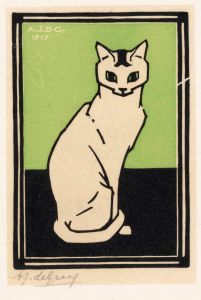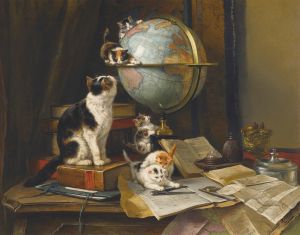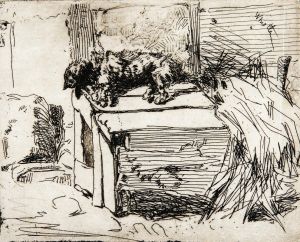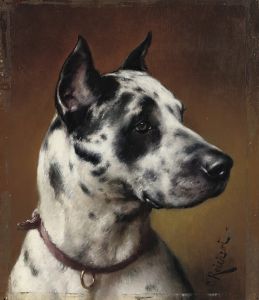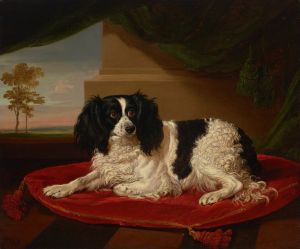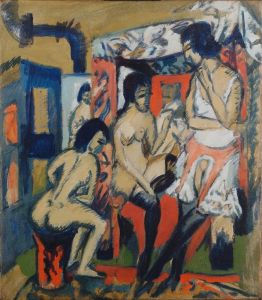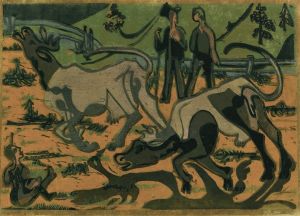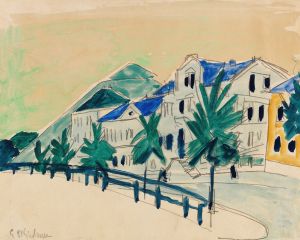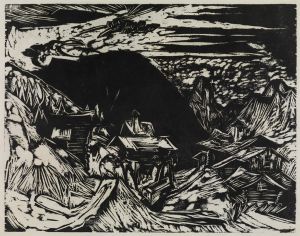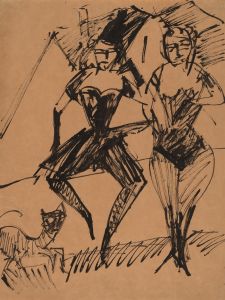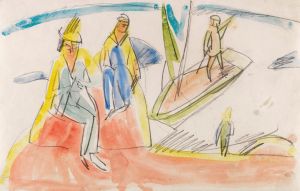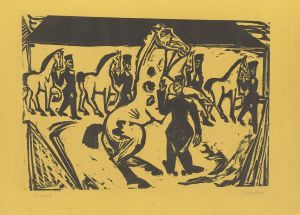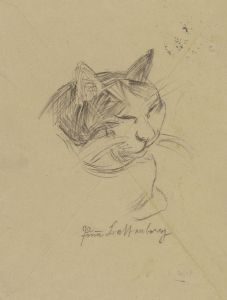
Alte Frau mit Katze
A hand-painted replica of Ernst Ludwig Kirchner’s masterpiece Alte Frau mit Katze, meticulously crafted by professional artists to capture the true essence of the original. Each piece is created with museum-quality canvas and rare mineral pigments, carefully painted by experienced artists with delicate brushstrokes and rich, layered colors to perfectly recreate the texture of the original artwork. Unlike machine-printed reproductions, this hand-painted version brings the painting to life, infused with the artist’s emotions and skill in every stroke. Whether for personal collection or home decoration, it instantly elevates the artistic atmosphere of any space.
"Alte Frau mit Katze" (Old Woman with Cat) is a painting by the German expressionist artist Ernst Ludwig Kirchner. Kirchner, born on May 6, 1880, in Aschaffenburg, Germany, was a key figure in the early 20th-century expressionist movement and a founding member of the artist group Die Brücke (The Bridge). This group aimed to create a new style of art that bridged traditional academic painting with modernist ideas, emphasizing emotional expression and bold use of color.
The painting "Alte Frau mit Katze" was created in 1937, during a tumultuous period in Kirchner's life. By this time, Kirchner had moved to Switzerland, seeking refuge from the political and social upheavals in Germany. The rise of the Nazi regime had a profound impact on Kirchner and his work. The Nazis condemned modernist art, labeling it as "degenerate," and in 1937, they confiscated over 600 of Kirchner's works from German museums. This period of persecution and the subsequent isolation in Switzerland influenced the themes and mood of his later works.
"Alte Frau mit Katze" depicts an elderly woman seated with a cat on her lap. The painting is characterized by Kirchner's distinctive expressionist style, marked by bold, angular lines and a vivid, somewhat dissonant color palette. The composition reflects Kirchner's interest in capturing the psychological depth and emotional intensity of his subjects. The woman's face is rendered with exaggerated features, conveying a sense of weariness and introspection, while the cat adds a touch of domestic intimacy to the scene.
Kirchner's use of color in "Alte Frau mit Katze" is particularly notable. The contrasting hues and dynamic brushstrokes create a sense of tension and movement, drawing the viewer's eye across the canvas. This technique is emblematic of Kirchner's broader approach to expressionism, where the manipulation of color and form serves to evoke the inner experiences and emotions of his subjects.
Throughout his career, Kirchner was deeply influenced by various artistic movements and styles, including African and Oceanic art, which he encountered through ethnographic museums and collections. These influences are evident in his stylized figures and the abstracted, almost primitive quality of his work. "Alte Frau mit Katze" embodies these elements, showcasing Kirchner's ability to blend different cultural and artistic references into a cohesive and powerful visual language.
Ernst Ludwig Kirchner's contributions to modern art were significant, and his work continues to be celebrated for its innovative and expressive qualities. Despite the challenges he faced, including the condemnation of his art by the Nazi regime and his struggles with mental health, Kirchner remained a prolific and influential artist until his death in 1938. "Alte Frau mit Katze" stands as a testament to his enduring legacy and his commitment to exploring the depths of human emotion through his art.





